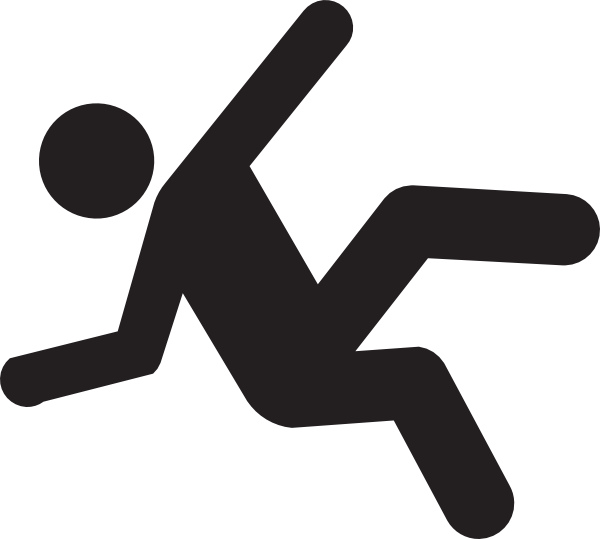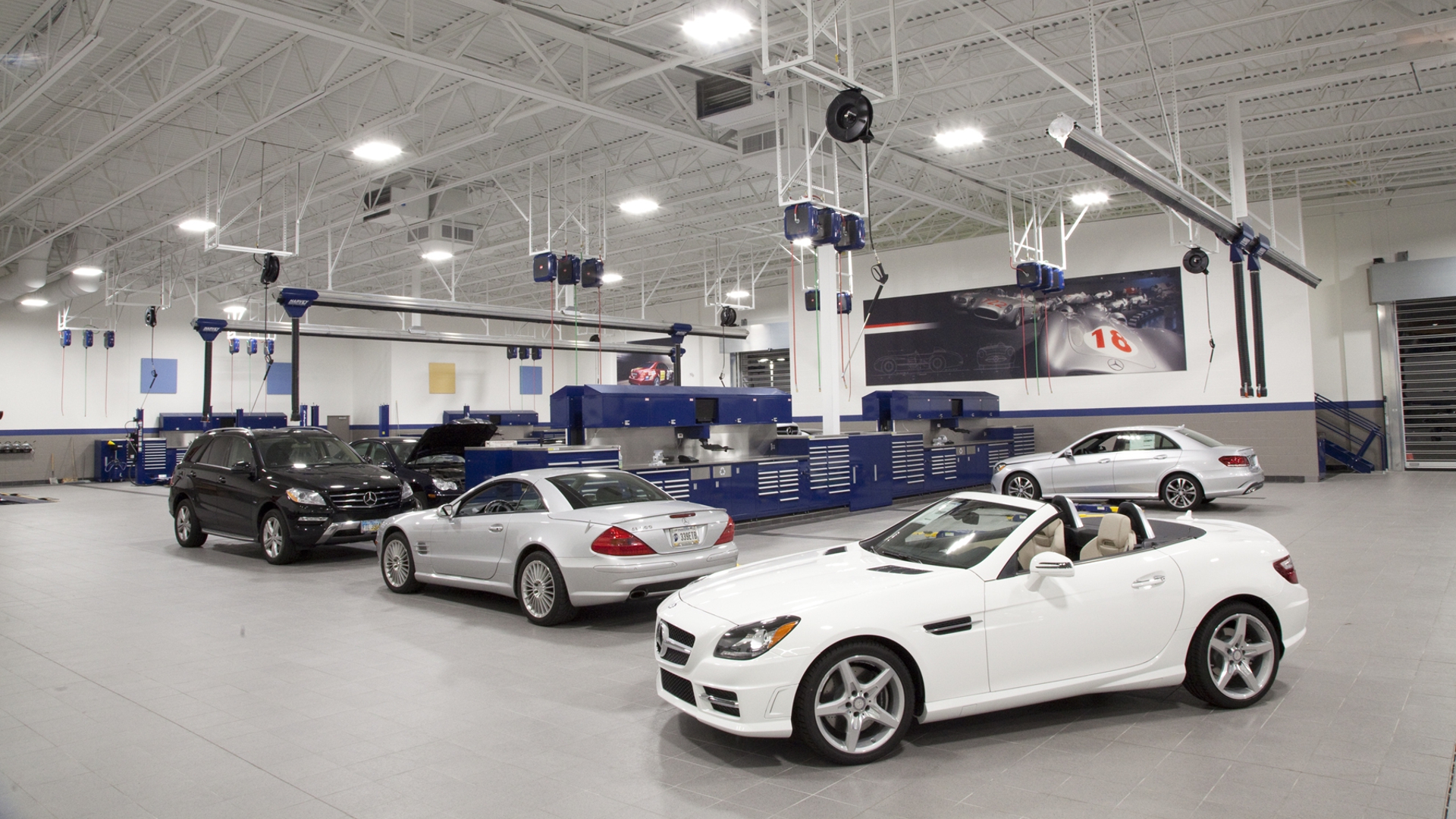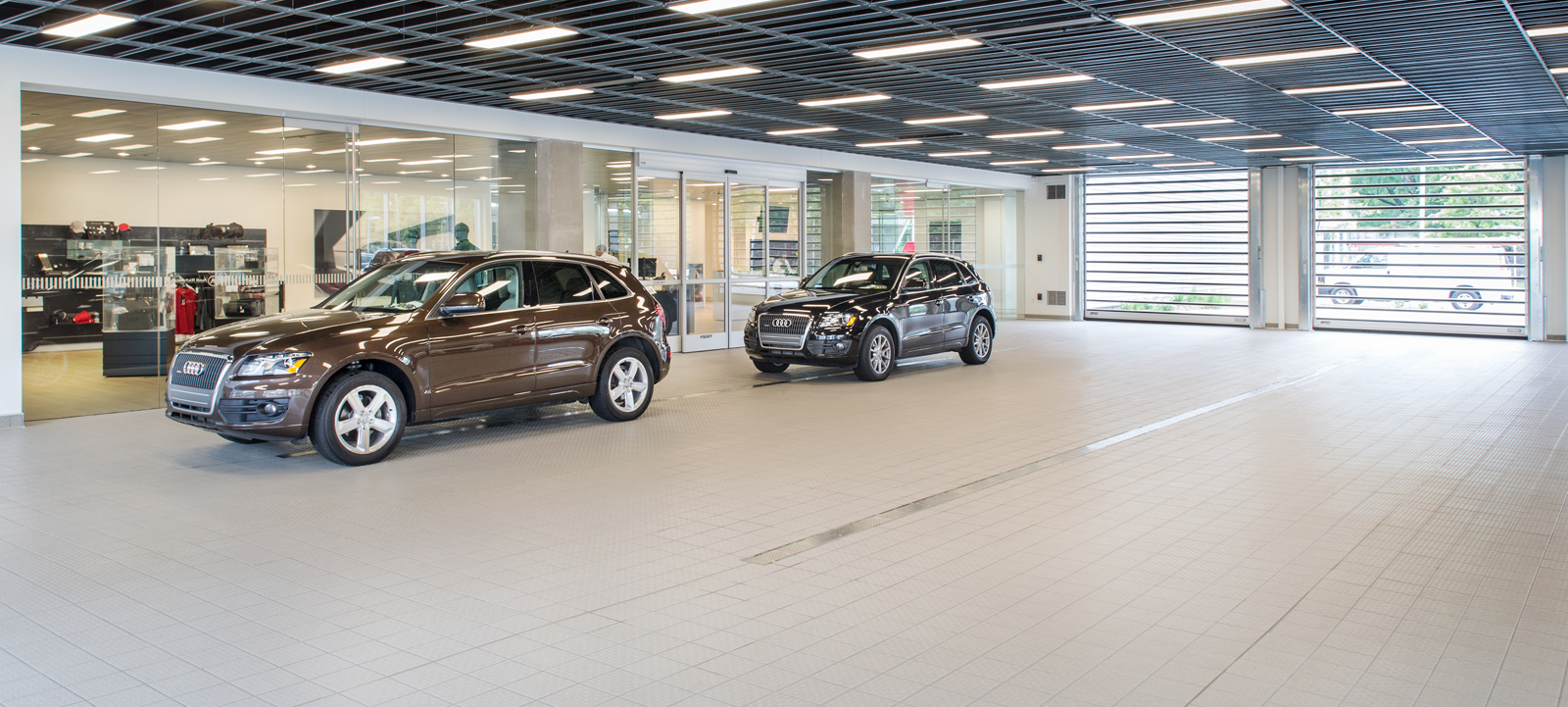AUTOSTONEUSA RESOURCES
ANSI Standards
(DCOF Ratings)
Tile material providers should listen to architects, general contractors, and automotive dealers when reviewing installation priorities. When it comes to managing DCOF & ANSI Standards, AutoStoneUSA’s DriveSeriesUSA, eShop2USA, and Enviroshop can alleviate those dealer concerns.
How to Measure Environment Risk
The ANSI A326.3 2021 standard changed the minimum DCOF (dynamic coefficient of friction) rating for hard surface materials used in environmental settings. This updated standard creates (5) categories which provide definition to help determine how to classify each of these (5) defined environmental spaces.
Product Use Classifications
| Classification | Reference Category | Criteria | AutoStoneUSA Best Shop Floors |
| Interior, Dry | ID | ≥ 0.42 dry DCOF* (per Section 10.1) | N/A |
| Interior, Wet | IW | > 0.42 wet DCOF* (per Section 9.1) | All brand compliant tiles except any program that utilizes a polished finish |
| Interior, Wet Plus | IW+ | > .50 wet DCOF* & Manufactured Declared | eShop8USA 8x81, EnviroShop12USA 12x122, and ClinkerShopUSA 4x85 |
| Exterior, Wet | EW | Manufacturer-Declared | DriveSeries8USA 8x83 and DriveSeries12USA 12x124 |
| Oils/Greases | O/G | Manufacturer-Declared | eShop8USA 8x8, DriveSeries8USA 8x8, and DriveSeries12USA 12x12 |
- eShop8USA 8×8 meets or exceeds .55 DCOF rating required for ANSI A326 4.1.3 (IW+) and ANSI A326 4.1.5 (O/G)
- EnviroShop12USA 12×12 meets or exceeds .50 DCOF rating required for ANSI A326 4.1.3 (IW+)
- DriveSeries8USA 8×8 meets or exceeds .55 DCOF rating required for ANSI A326 4.1.3 (IW+) and ANSI A326 4.1.5 (O/G)
- DriveSeries12USA 12×12 meets or exceeds .55 DCOF rating required for ANSI A326 4.1.3 (IW+) and ANSI A326 4.1.5 (O/G)
- ClinkerShopUSA 4×8 meets or exceeds .55 DCOF rating required for ANSI A326 4.1.3 (IW+) and ANSI A326 4.1.5 (O/G)
Automotive Service & Workshop
Environment Examples

Service Drive with Manual Roll-Up Doors
Manual roll-up doors do not control the environment throughout daily use and would default to Exterior Wet (EW), or Oils/Greases (O/G).

Service Drive with High-Speed Roll-Up Doors
High-speed doors can control the environment
throughout daily use. High-speed doors provide ownership an environment that may rate for Interior, Wet, Plus (IW+), Exterior Wet (EW), or Oils/Greases (O/G).

Oil & Lube or Service Drive
An Oil Lube or service drive where either are
regularly exposed to automotive fluids, and
are exposed to weather conditions would be
rated either (EW), or oils/grease (O/G).
IMPORTANT!
DOWNLOAD NEW CONSTRUCTION STANDARD MANUAL
"Automotive Service Facility Design & Planning Risk Management Guide"
Starting in Summer of 2022, automotive facility design and construction changed. This change was implemented by the new ANSI A326.3 standard which published new and higher DCOF (dynamic coefficient of friction) requirements for hard surfaces (tile) used in automotive builds.
Dealership builds face increased STF litigation exposure if you do not adhere, address and comply with the new requirements created by this standard. There are many facets to this standard which additionally require tile manufacturers to declare that their products are appropriate for the environment of use, and all parties involved with the selection, installation, and use of flooring materials.
Risk is determined not only by the environment of use, but also your facility design and construction. As ANSI A326.3.2021.4.1.5 Oils, Grease (O/G) Environment states the following, “Subject to determination by specifier and the criteria in this standard, may include, but are not limited to, level areas regularly exposed to automotive fluids,”
There are no ANSI police, but there are plaintiff attorneys who specialize in STF litigation and if dealerships, architects, builders and contractors don’t properly measure risk, all parties can be involved in costly litigation.
Download the document to get up to speed on this new standard. Contact your AutoStoneUSA representative to help you with your facility planning. Lastly, rest assured that AutoStoneUSA has the right products to support your automotive facility build.

What is Dynamic Coefficient of Friction or DCOF?
Dynamic Coefficient of Friction (DCOF): Sometimes called kinetic coefficient of friction. This is the ratio of the force necessary to keep a surface already in motion sliding over another surface divided by the weight (or normal force) of the sliding object. Different contaminants such as dirt, water, soap, oil, or grease can change this value.
What the is ANSI 326.3 2021 Standard?
This new ANSI standard also provides informative notes to help the specifier and facility operator on how to how to define your facility. Ultimately, the determination falls on ownership and your tolerance for risk. Ask your AutoStoneUSA representative for our technical ratings & manufacturer-declared product use categories.


Manage STF (Slip, Trip, & Fall) Risk
The reality of an automotive service facility is that dealers conduct business on floors that have contaminants tracked in by vehicles throughout the day. This increases STF (slip, trip, fall) risk exposure. Employees and customers are constantly exposed to these STF conditions which if not properly managed can lead to workplace injuries, litigation, and higher general liability insurance premiums. The question for a dealership is, “what is the best floor surface to address the reality of STF risk we face in the service drive and workshop space?” We suggest you talk with AutoStone to find a better solution to address and reduce STF risk.
AutoStoneUSA
Best Shop Floors
AutoStoneUSA is the automotive industry’s leader in providing advanced surface traction, performance, permanence, and cleanability technology. We offer you better choices, more competitive pricing, declared product use classifications, and solutions that meet your brand requirements and better yet – your specific dealership needs and budget!
Important Note: Click logos below to learn about each floor system








